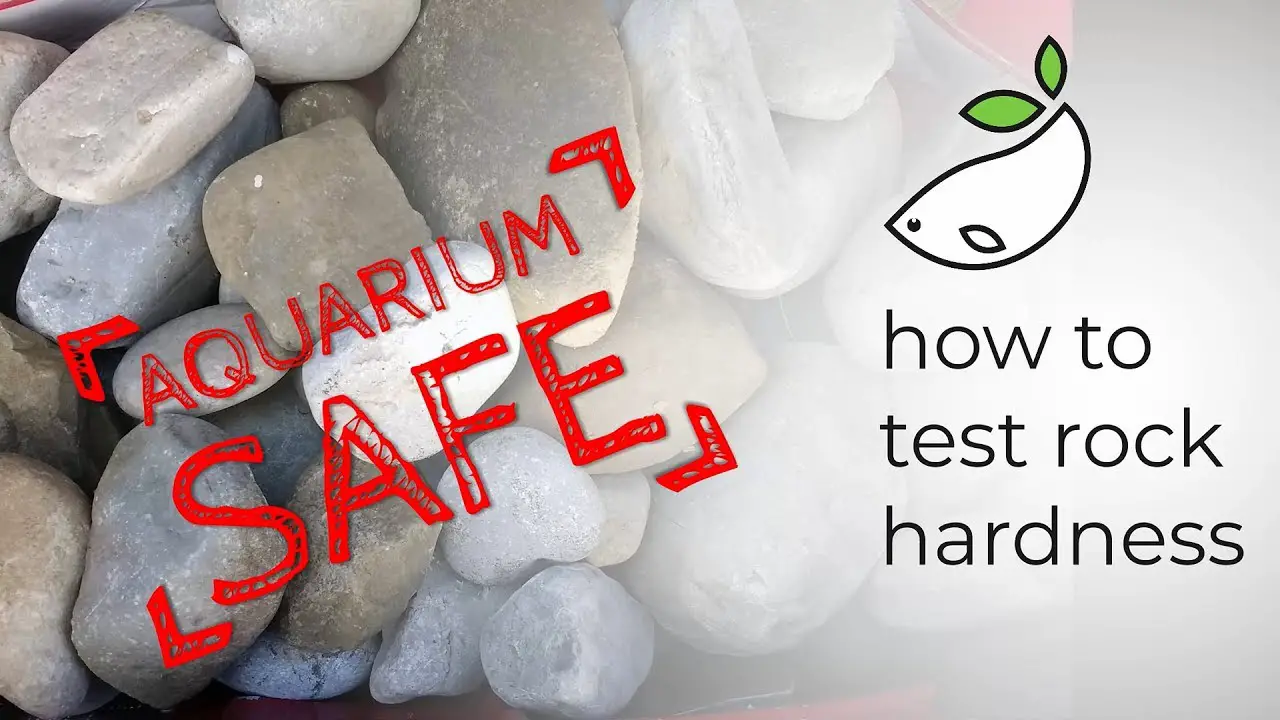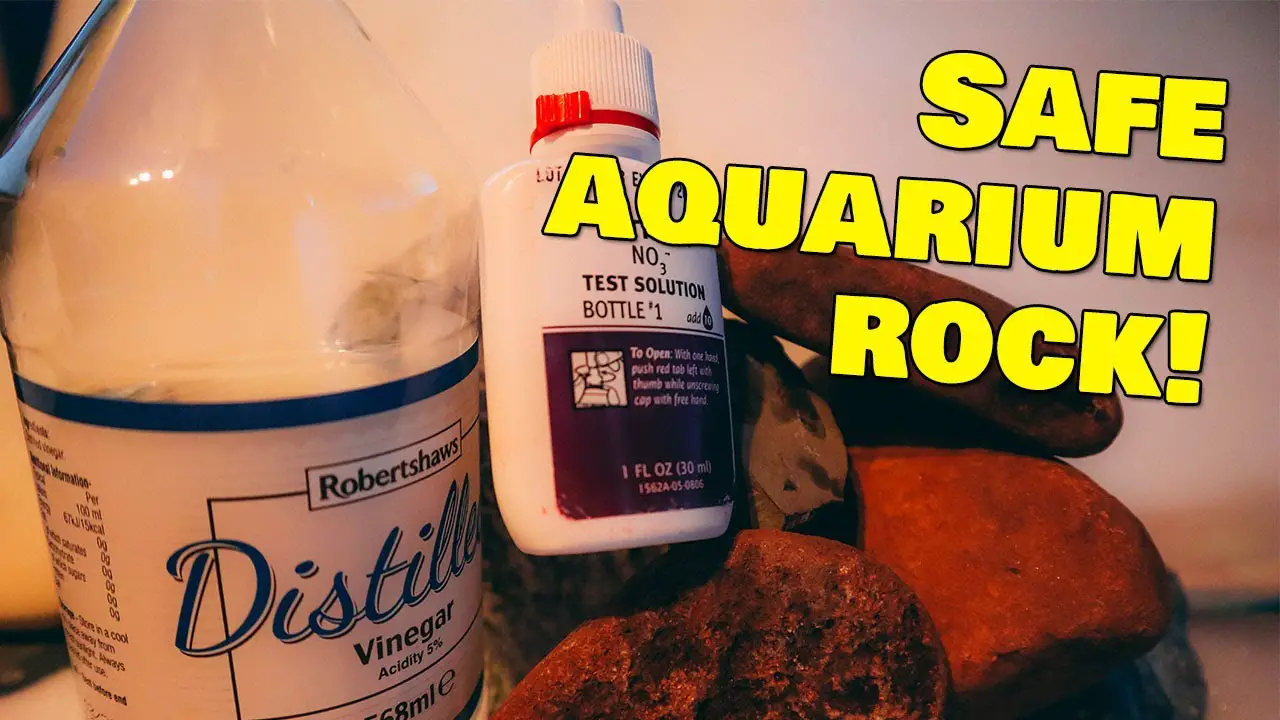If you’re an aquarium enthusiast, one thing you might be wondering about is how to test rocks for your aquarium. It’s important to test rocks before placing them in your tank, as some rocks can have harmful chemicals or minerals that can negatively affect your aquatic pets.
There are various methods to test rocks for aquarium use, including using vinegar or muriatic acid. In this article, we’ll explore the different ways to test rocks and provide you with tips on how to ensure your aquarium rocks are safe for your fish and plants.
Testing rocks for aquarium is an essential process to ensure the safety of your aquatic pets. To do this, follow these steps:
- First, clean the rocks thoroughly with water and a scrub brush.
- After cleaning, pour vinegar on the rocks and watch for bubbles. If there are bubbles, it indicates that the rocks contain minerals that can alter the water chemistry. Avoid using these rocks.
- If there are no bubbles, pour hydrochloric acid on the rocks. If the rocks fizz or bubble, it means they contain carbonate minerals that can raise the water’s pH level. Avoid using these rocks as well.
- Finally, if there are no bubbles after pouring hydrochloric acid, the rocks are safe to use in your aquarium.

How to Test Rocks for Aquarium?
If you are planning to set up an aquarium, then you might want to add some rocks to make it look more natural. However, not all rocks are safe for aquariums, and some might even harm your fish. Therefore, it is essential to test the rocks before putting them in your aquarium. Here’s how to test rocks for an aquarium:
1. Know the Types of Rocks Suitable for Aquariums
Not all rocks are suitable for aquariums. Some rocks can raise the pH level of the water, while others can leach harmful chemicals. Therefore, it is essential to know the types of rocks that are safe for aquariums. Here are some of them:
– Basalt
– Lava rock
– Quartz
– Slate
– Granite
– Petrified wood
Benefits of using these rocks:
– They are non-toxic and do not leach harmful chemicals.
– They do not affect the pH level of the water.
– They provide a natural habitat for the fish to explore and hide.
Rock types to avoid:
– Limestone
– Marble
– Dolomite
– Sandstone
Vs
These rocks can raise the pH level of the water and make it more alkaline. They can also leach calcium and other minerals that can harm your fish.
2. Perform the Acid Test
The acid test is an effective way to test the rocks for aquariums. Here’s how to do it:
– Take a small piece of the rock and place it in a container.
– Pour some vinegar or hydrochloric acid over the rock.
– If the rock fizzes or bubbles, then it is not suitable for aquariums.
Why perform the acid test?
Acid reacts with the minerals in the rock, and if it fizzes or bubbles, it means that the rock contains carbonates, which can raise the pH level of the water and make it more alkaline.
3. Perform the Scratch Test
The scratch test is another way to test rocks for aquariums. Here’s how to do it:
– Take a small piece of the rock and scratch it with a sharp object like a knife or a nail.
– If the rock leaves a mark or a powder, then it is not suitable for aquariums.
Why perform the scratch test?
Some rocks contain minerals that can easily dissolve in water and harm your fish. The scratch test helps to identify such rocks.
4. Soak the Rocks
Soaking the rocks in water is another way to test them for aquariums. Here’s how to do it:
– Take a small piece of the rock and soak it in a container of water for a few days.
– After a few days, test the pH level of the water.
– If the pH level has changed, then the rock is not suitable for aquariums.
Why soak the rocks?
Soaking the rocks helps to identify if they leach any harmful chemicals or minerals that can affect the pH level of the water.
5. Test the Hardness of the Rock
The hardness of the rock is also an important factor to consider when testing rocks for aquariums. Here’s how to test the hardness of the rock:
– Try to scratch the rock with a sharp object like a knife or a nail.
– If the rock is hard and does not leave a mark, then it is suitable for aquariums.
Why test the hardness of the rock?
Some rocks can easily dissolve in water and affect the pH level of the water. Hard rocks are less likely to dissolve and leach harmful chemicals.
6. Rinse the Rocks
Before putting the rocks in your aquarium, it is essential to rinse them thoroughly to remove any dust or debris. Here’s how to do it:
– Take the rocks and rinse them under running water.
– Scrub them gently with a brush to remove any dirt or debris.
7. Sterilize the Rocks
Sterilizing the rocks is also essential before putting them in your aquarium. Here’s how to do it:
– Boil the rocks in water for at least 10 minutes.
– Let them cool down before putting them in your aquarium.
Why sterilize the rocks?
Sterilizing the rocks helps to kill any bacteria or parasites that might harm your fish.
8. Arrange the Rocks
Once you have tested and sterilized the rocks, it’s time to arrange them in your aquarium. Here are some tips:
– Create a natural-looking environment by arranging the rocks in a haphazard manner.
– Create caves and hiding spots for your fish to explore.
– Be creative and experiment with different arrangements.
9. Monitor the pH Level
It’s essential to monitor the pH level of the water regularly, especially after adding new rocks to your aquarium. Here’s how to do it:
– Use a pH test kit to test the pH level of the water.
– If the pH level has changed, then take appropriate measures to adjust it.
10. Enjoy Your Aquarium
Now that you have tested and added the rocks to your aquarium, it’s time to sit back and enjoy your natural-looking aquarium. Remember to take good care of your fish and monitor the water parameters regularly.
Frequently Asked Questions
When it comes to creating an aquarium, the type of rocks you use can make a significant impact on the environment you are trying to create. Therefore, testing the rocks beforehand is crucial. Here are some frequently asked questions about how to test rocks for aquariums.
What are the Best Types of Rocks for Aquariums?
The best types of rocks for aquariums are ones that are inert and won’t change the pH level of the water. Examples of these rocks include granite, basalt, lava rock, and quartz. However, it’s important to note that not all rocks of these types are safe for aquariums, as some may contain metals or minerals that could be harmful to aquatic life.
To test if a rock is safe for an aquarium, you can use the vinegar test. Simply drop a small amount of vinegar onto the rock. If it fizzes or bubbles, then it is not safe to use because it contains minerals that can alter the pH level of the water.
Why Should I Test Rocks for My Aquarium?
Testing rocks for your aquarium is important because it helps ensure the safety and health of your aquatic life. Certain types of rocks can contain minerals or metals that can be harmful to fish or other aquatic creatures. Additionally, some rocks can alter the pH level of the water, which can also be detrimental to aquatic life.
By testing rocks beforehand, you can avoid potential problems and create a safe and healthy environment for your aquarium inhabitants.
How Do I Conduct the Acid Test?
The acid test is used to determine if a rock contains any carbonate minerals, which can affect the pH level of the water in your aquarium. To conduct the acid test, place a small amount of the rock in a container and add a few drops of hydrochloric acid. If the rock bubbles or fizzes, it contains carbonates and is not safe for use in your aquarium.
It’s important to note that the acid test should only be conducted in a well-ventilated area, and you should wear gloves and eye protection to avoid any contact with the acid.
Can I Use Rocks I Find Outside in My Aquarium?
While it may be tempting to pick up rocks you find outside and use them in your aquarium, it’s not recommended. Rocks found outside may contain harmful bacteria or other contaminants that can be harmful to aquatic life. Additionally, it can be difficult to determine if a rock is safe for use in an aquarium without conducting proper testing.
It’s always best to purchase rocks specifically designed for aquarium use, or to test any rocks you find outside thoroughly before using them in your aquarium.
How Often Should I Test Rocks for My Aquarium?
It’s recommended to test rocks for your aquarium before adding them to your tank. However, if you have already added rocks to your aquarium and notice any changes in the water quality or pH levels, it’s important to conduct additional testing to determine if the rocks are the cause of the problem.
Additionally, it’s a good idea to conduct routine water testing and monitoring to ensure the overall health and safety of your aquarium inhabitants.

Testing rocks for aquarium – easy test for aquarium safe rock
In conclusion, testing rocks for aquariums is an essential process for ensuring the safety and health of your aquatic pets. By following the steps outlined in this guide, you can make informed decisions about which rocks to use in your aquarium and avoid any potential harm to your fish or other aquatic creatures.
Testing the rocks for pH level, mineral content, and potential toxins is crucial before adding them to your aquarium. By using simple tools like vinegar, pH test kits, and water hardness test strips, you can ensure that the rocks you choose are safe and suitable for your aquarium.
Remember to always prioritize the well-being of your aquatic pets by providing a clean and healthy environment for them to thrive in. Properly testing your aquarium rocks is just one of the many steps you can take to create a happy and healthy home for your underwater friends.
